When and how to feed currants in spring: the best fertilizers for a good harvest
Currants need feeding no less than other plants, especially in the spring months. The main thing is to know how and how to feed the currants in spring and summer, as well as during which periods it is best to do this in order to get a good harvest as a result.
Well, then you will be presented with a scheme for feeding currants in the spring and summer.
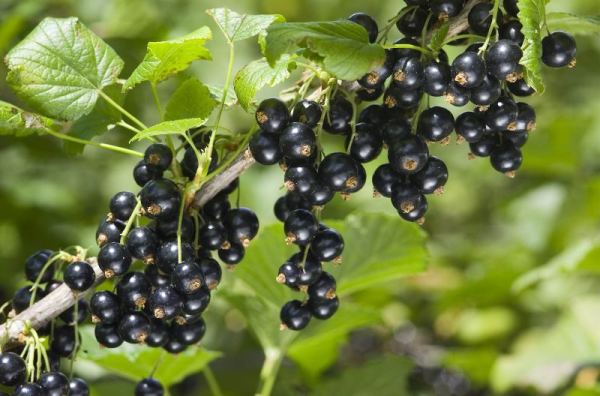
Content
- 1 Why fertilize currants in spring: why do you need spring feeding
- 2 When to fertilize currants in spring: optimal timing and scheme
- 3 How to properly fertilize currants, what types of dressings are there, their specificity
- 4 How to feed currants in spring for a good harvest: options for effective spring fertilizers
- 5 What else needs to be done in the spring to get a good harvest of currants
Why fertilize currants in spring: why do you need spring feeding
Currants, like any other berry shrub, are quite demanding on nutrition and, accordingly, sensitive to its lack.
Currant needs the whole complex of macro- (nitrogen, phosphorus and potassium) and microelements
However, it is believed that exactly phosphorus - the most important nutritional element for currants, however, do not forget about potassium, and about nitrogen.
However! You cannot overdo it with nitrogen fertilizers, otherwise the currants will drive the foliage, and you may not wait for the harvest.
Phosphorus is responsible not only for the formation of the root system of the plant, but also has a direct effect on the formation of berries, their quantity and quality (their size and taste). Moreover, its main amount is consumed precisely in the first phases of development and growth of the shrub, i.e. in the spring.
That is why, due to a lack of phosphorus, the number of ovaries decreases, and therefore, both the yield and the content of sugars in berries are sharply reduced (they simply cease to be sweet).
That is why it is so important to provide it with phosphorus at all stages of currant development.
Note! Since phosphorus fertilizers are difficult to dissolve in the soil, especially if liming has been carried out (decrease in acidity), they are applied in the fall with the expectation that they will become more available in the next season.
However, if this was not done in the fall, then in the spring it is imperative to prepare an easily and quickly digestible phosphorus dressing.
Thus, feeding currants in the spring, which should include the entire balanced set of macro- and microelements, is performed for the normal growth and development of the plant, in particular, to increase its yield, improve the overall and taste qualities of berries.
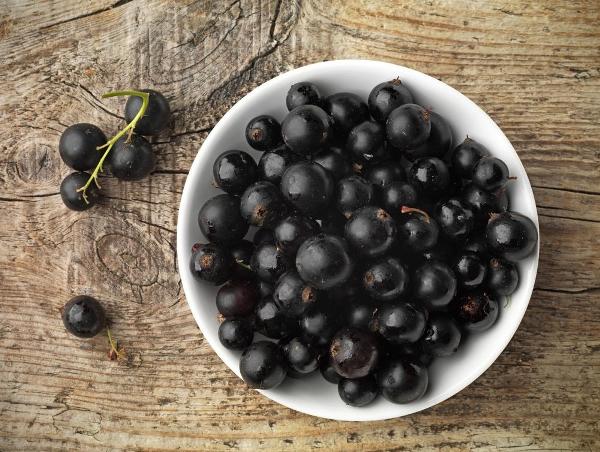
When to fertilize currants in spring: optimal timing and scheme
The currants should be fed in the spring according to a certain scheme, so it is extremely important to know when and at what time to apply fertilizers. In this case, it is necessary to rely on the phases of plant development.
Many gardeners adhere to the following scheme for feeding currants in spring and summer (after harvest) or in autumn:
Note!You should not rush to the first feeding. The plant roots still begin to absorb and assimilate fertilizers only at a soil temperature of at least + 5-10 degrees.
- The first feeding of currants is carried out in early springwhen a stable positive temperature is established and the plant begins to wake up (its buds swell). That is, practically after you cut, loosen and weed bushes from weeds.
At this point, the plant needs a lot of nitrogen to build up green mass. Alternatively, you can apply a complex fertilizer, such as nitroammophoska.
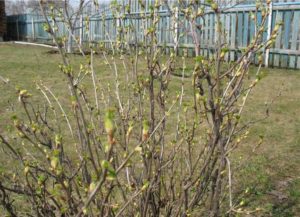
- Just before flowering (during budding).
In order for currant berries to gain weight - to be large and sweet, they need more potassium and phosphorus. That is why potash and potash must be included in the top dressing. phosphate fertilizers, as well as a little nitrogen (but much less than during the first feeding). You can still use nitroammophos, but diammophos is better.
- During flowering and beginning of fruiting.
During this period, it is recommended to use more potassium and phosphorus, then the berry will be sweeter, stronger and more aromatic.
And during flowering, it is very desirable to spend foliar feeding with boron (boric acid solution) - for better berry setting (more harvest).
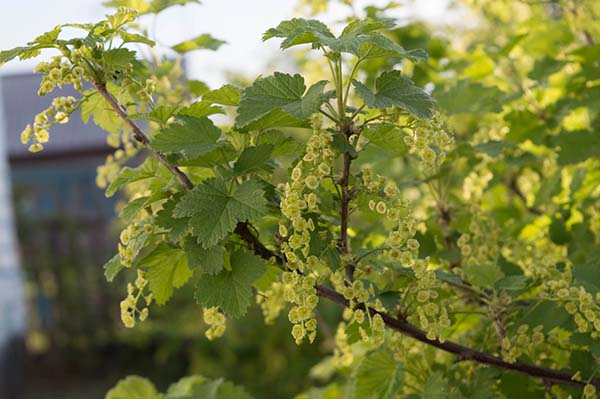
- After fruiting and harvesting (late summer-autumn).
The purpose of the last dressing is for the currant bushes to lay flower buds = prepare for the next harvest, and also strengthen themselves before wintering, in other words, so that they do not freeze out. Therefore, plants need phosphorus and potassium (as an option, superphosphate and potassium sulfate or just potassium monophosphate).
By the way! The site has a detailed article about how and what to feed currants after fruiting and harvesting (in autumn).
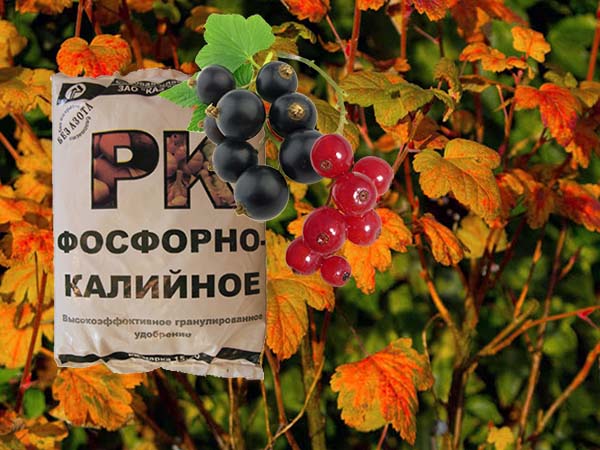
How to properly fertilize currants, what types of dressings are there, their specificity
Basic rules and recommendations for spring currant fertilization:
- A currant planted last year does not need additional feeding in the spring, if a sufficient amount of organic and mineral fertilizers was applied to the soil during planting.
They begin to feed only after 2-3 years, since only by this time the plants will have pulled out of the soil all the nutrients introduced during their planting.
- Before feeding the currants, it is recommended to first spill the bushes with plain water, because it is always necessary to fertilize on wet soil, especially with mineral fertilizers.
By the way! You can water it a day or 1-2 hours before applying liquid dressing.
- If during root feeding you get on the leaves and fruits, then try to irrigate (lightly rinse) with plain water.
- Top dressing is desirable in the morning or evening hours, but not at noon, when the sun is at its zenith.
Methods or types of feeding
Exists 2 ways or type of feeding any plant (including currants): root (watering at the root) and foliar (by leaves). Let's take a closer look at each of them.
As a rule, it is in the spring major root dressing (more often in liquid form, but it is also possible in dry form - scatter the granules and cover with earth. Further, the fertilizers will gradually dissolve during watering or rains). But already in summer can be done and foliar feeding (by leaves).
Root dressing
Root dressing involves the application of fertilizers directly under the currant bushes or at some distance from them.
It is recommended to distribute fertilizers along the diameter of the bush (crown perimeter), making small annular grooves, so to speak, grooves (holes), and then dropping them in with earth.
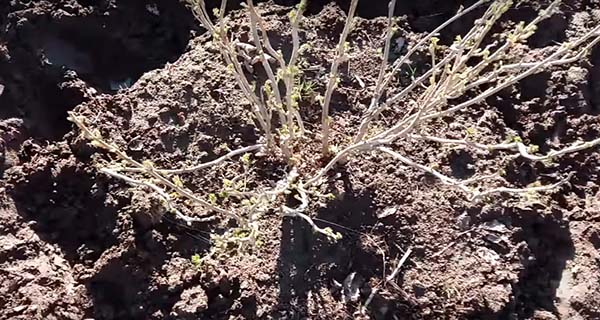
For root dressing, as a rule, mineral fertilizers with macronutrients, as well as organics.
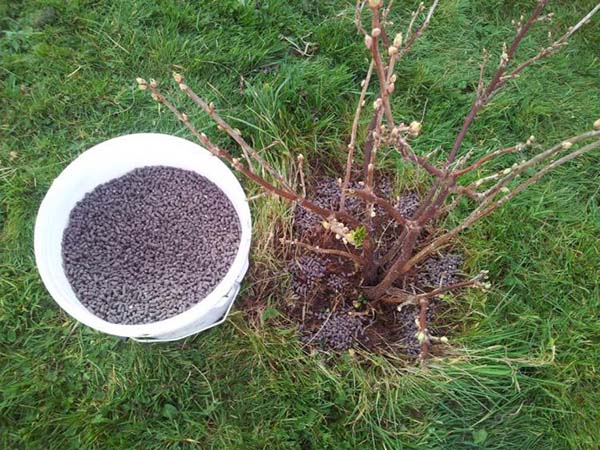
Foliar dressing
Fertilizing currants in the spring for a good harvest can be done not only under the root, but also on the leaves.
Note! It is believed that foliar dressing is most effective when the plant especially needs certain trace elements (which is manifested in its appearance). In other words, they are carried out out of necessity.
Thus, foliar dressing, as a rule, is carried out with the help of fertilizers, which include trace elements (eg, boron).
Obviously! Foliar dressing cannot completely replace root dressing. Therefore, the root is the main dressing, and the foliar is additional (if necessary).
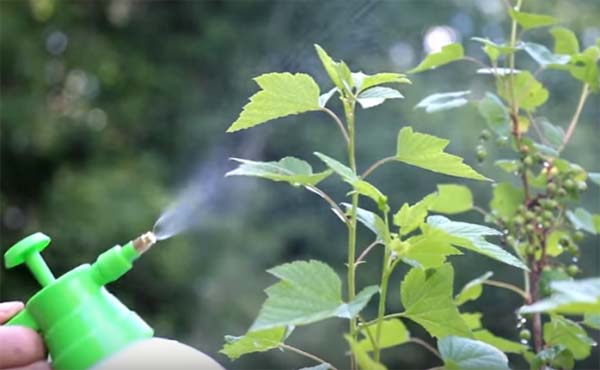
How to feed currants in spring for a good harvest: options for effective spring fertilizers
Naturally, before buying and fertilizing, you need to figure out how (with what fertilizer) you can and better feed currants in the spring.
As with many other crops, mineral and organic fertilizers are used to feed currants.
Next, we will take a closer look at what fertilizers can be used, and also how to combine them.
Note! It is not necessary to apply potassium chloride and phosphorus fertilizers under white and red currants (but under black currants!) (for example, potassium chloride, potassium salt and diammophos). Such feeding can provoke plant disease. chlorosis.
By the way! Almost all berries are very sensitive to an excess of chlorine, in particular red and white currants, wild strawberries (strawberries), grapes, to a lesser extent - black currants and gooseberries.
Nitrogen feeding
Remember! Applicable only 1 time, in early spring.
Mineral nitrogen fertilizers:
- Urea (Carbamide) - 46% nitrogen (10-15 grams per 10 liters of water or per 1 sq. M);
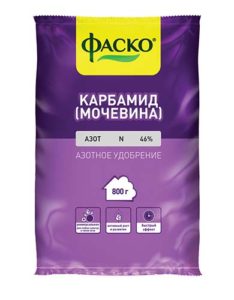
- Ammonium nitrate - 33% nitrogen (15-20 grams per 10 liters of water or per 1 square meter);
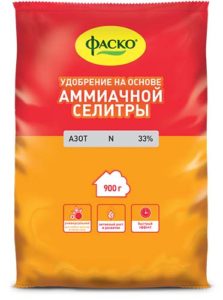
Organic nitrogen fertilizers:
- chicken droppings (as a rule, 1 in 20 with water, or you can simply sprinkle it in the trunk circle);
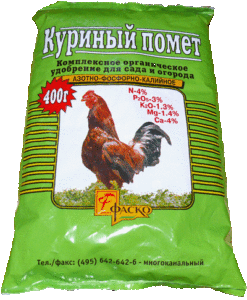
By the way! Please note that purchased poultry manure contains the entire range of macronutrients, as well as some trace elements.
- infusion cow dung or mullein (1 in 40);
- green manure (nettle infusion).
It is also very good to mulch the tree trunk circle with compost or humus.
Complex mineral dressing
It is very convenient to use complex mineral fertilizers, which contain all the macronutrients.
So, currants in the spring (before flowering) can be fed with the following fertilizers:
- Nitroammofoska (nitrogen, phosphorus, potassium - 16% each). Prepare the solution at the rate of 20-30 grams per 10 liters of water. Pour about 5 liters under an adult bush.
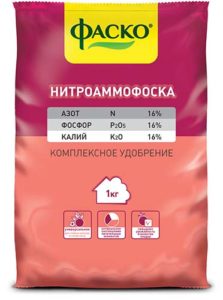
Video: feeding currants in the spring with nitroammophos and other tips for spring care for the shrub
- Diammofoska - 10% nitrogen, 26% phosphorus and potassium each (20-30 grams per 10 liters of water).
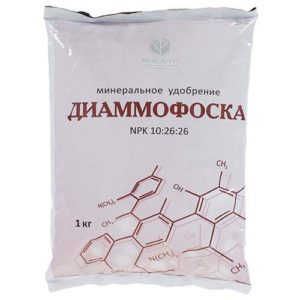
Note! The composition of these fertilizers does not include any trace elements, and it is very desirable to add them. Therefore, it is highly recommended to add humates to the solutions, which are described in more detail later, in the last paragraph.
Mineral and organic potassium-phosphorus feeding
Suitable for feeding before and after flowering, as well as in autumn.
Mineral:
- Superphosphate - nitrogen 6-9%, phosphorus - 26-30% (20-30 grams).
Advice! The site has a separate article about how to apply superphosphate.
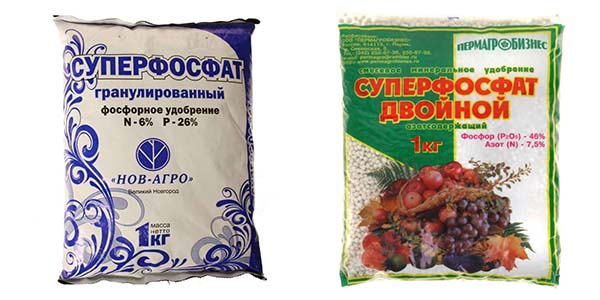
- Potassium sulfate (potassium sulfate) - 46-52% potassium (15-20 grams).
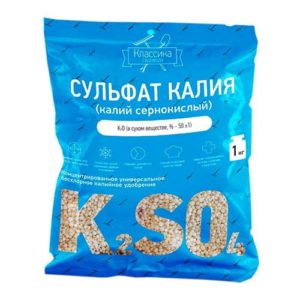
All (superphosphate and potassium sulfate) dissolve and mix in 10 liters of water, and then pour 5 liters of solution under each bush.
By the way! Instead of potassium sulfate (potassium sulfate), you can use potassium salt.
Attention! This is a chloride fertilizer, which means it is not suitable for white and red currants (you can fertilize black).
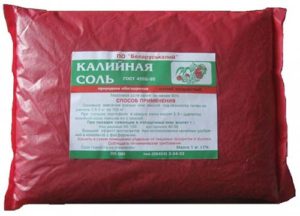
Or potassium nitrate (Nitrogen -13.6, Potassium 46%).
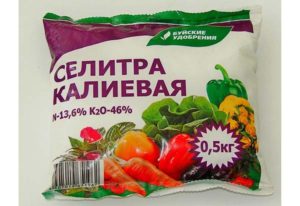
And it is also very convenient to use kalimagnesia, which, in addition to potassium, also includes such an important trace element as magnesium.
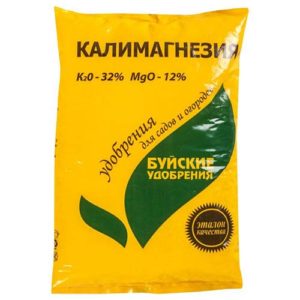
Organic potassium phosphorus supplement
If you proponent of organic farming, then you can as potash feeding use wood ash, having prepared a solution (or even better infusion-extract): 100-200 grams of ash per 10 liters of water.
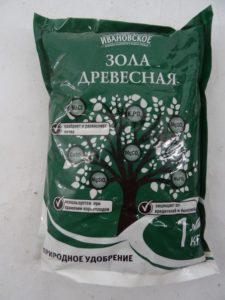
Concerning phosphorus, then it is in the same bone or fish meal (100-200 grams per 1 square meter).
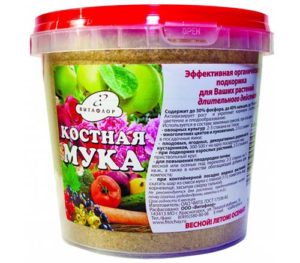
Video: phosphorus fertilizer for shrubs (bone meal)
Rapidly assimilated phosphorus supplement
Suitable for feeding before and after flowering (during fruiting).
To make an easily digestible infusion superphosphate for spring feeding of currants it is necessary:
Take potassium monophosphate, dissolve in water and fertilize. However, it is not always possible to find it in the store, and it costs a lot.
Or:
- 1 kg double superphosphate pour 5 liters of boiling water;
- after the water has cooled, add 0.5 liters of 9% vinegar;
Acidifying the water will help convert the calcium phosphate to a more soluble form.
- Let it brew for 12-24 hours, shaking and stirring occasionally.
- Add another 5 liters of water, bringing the total volume to 10 liters.
- Then dilute 1 liter of the superphosphate infusion with 10 liters of water (1 to 10).
- Carry out top dressing.
Advice! The remaining phosphorus sediment can be dug under the fruit trees.
Autumn potassium-phosphorus fertilizing (after harvest)
The following combinations of mineral and organic fertilizers can be an excellent option for feeding currants after fruiting and harvesting (i.e. at the end of summer - closer to autumn).
By the way! The site has a detailed article about how and what to feed currants after fruiting and harvesting (in autumn).
First option:
- superphosphate - nitrogen 6-9%, phosphorus - 26-30% (20-30 grams per 10 liters of water).

Or double superphosphate (nitrogen 7.5-10%, phosphorus 46%). But the dose should be reduced by 1.5-2 times.
- potassium sulfate (potassium sulfate) - 46-52% potassium (15-20 grams per 10 liters.

Second option:
- Nitroammofosk - 2 tbsp. spoons (25-30 grams).
- Wood ash - 1 glass (100-200 grams).
Third option:
- Diammofoska - 10% nitrogen, 26% each phosphorus and potassium (20-30 grams).

Fourth option:
- Potassium monophosphate (Phosphorus - 50%, potassium - 33%) - 15-20 grams;
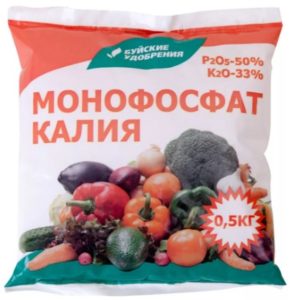
Dissolve everything, mix in 10 liters of water and pour 5 liters of solution under each bush.
Fertilizers for currants
If you do not want to bother (you are a "lazy" summer resident), you can buy one of the special complex fertilizers for currants (berry bushes), which already contains all the macro- and microelements (all apply and dilute according to the instructions on the packages):
- Gumi-Omi "Berry" for currants, strawberries, raspberries and other berry bushes (based on chicken droppings).
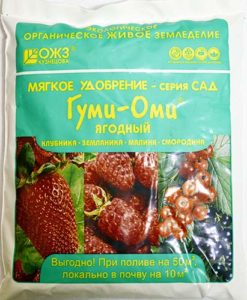
- Specialized fertilizers are especially popular prolonged action (granular, it is advisable to add them dry into holes along the diameter of the bushes, and then water). For example, "Berry bushes»From Fasco.
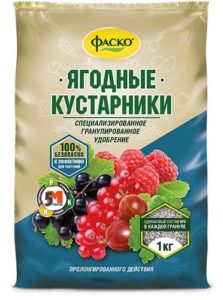
- other.
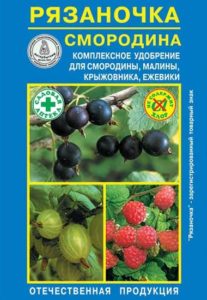
Fertilizers with humates and microelements
Very good to use humateswhich contribute to better absorption of mineral fertilizers. Therefore, you can first prepare a humate solution (for example, Potassium humate), and then add a complex mineral fertilizer to it, for example, the same Nitroammofosk.
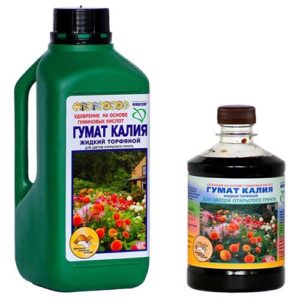
By the way! Now humates are initially added to some complex mineral fertilizers. For example, "Strong " from Fasco with potassium humate and trace elements.
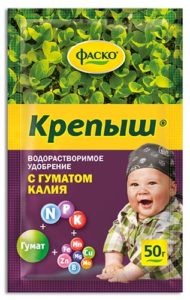
In general, it is very convenient to use for feeding currants ready-made cocktails with essential microelementstype Humate +7 Iodine.
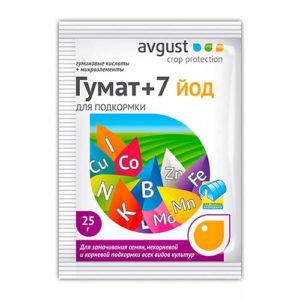
Folk remedies
Among folk remedies, feeding currants with yeast is very popular.
This is best done before flowering.
- 100 g of fresh yeast (or 30-35 grams of dry yeast, i.e. the ratio is 1 to 3) and 100 grams of sugar are dissolved in 5 liters of warm water and infused for 1-3 days (to start the fermentation process), while not forgetting stir periodically. Then the resulting stock solution is diluted 1 in 10 with water, poured into a watering can and abundantly watered (pouring out about 5 liters) each plant.
Important! Adding yeast to the soil negates the presence of potassium in the soil (dissolves it), so immediately after a week add potassium supplement, for example, wood ash or potassium sulfate (potassium sulfate).
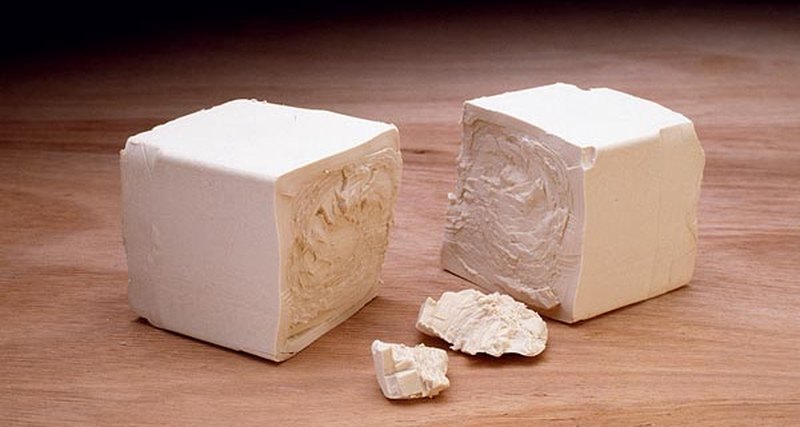
- As a folk remedy for fertilizing currants in spring, they are often used potato peelings (dry, frozen, fresh)... The advantage of such feeding is the high content of starch in the purification, which is necessary for plant growth. Moreover, you can both prepare the infusion (fill the bucket 2/3 with cleanings and pour boiling water over it, insist for 2-3 days), or simply in early spring or autumn spread the tops under the bushes, and even better to dig them along the perimeter of the crown.
It is necessary to drip it in order for the cleaning to rot faster and give its useful substances to the currants.
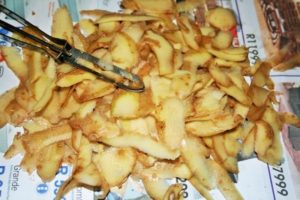
If you try to fertilize the bush store-bought starch, there will be no such effect.
Video: feeding currants in early spring with potato peelings
What else needs to be done in the spring to get a good harvest of currants
Spring currant care measures include the following:
- opening after winter (removal of the winter shelter);
- spring pruning;
- transplant (if necessary);
- loosening and weeding;
- directly feeding;
- watering;
- mulching;
- processing of currants from diseases and pests;
- aphid control.
By the way! The site also hasgeneral detailed article on spring currant care.
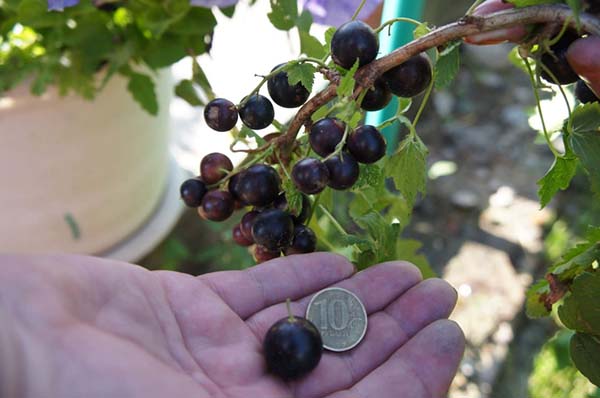
Thus, in order for the currant to thank you with a generous harvest, you definitely need to regularly feed the currant bush in the spring and autumn. It will not take you much time, but you will definitely appreciate the result. You just need to know exactly when, how and with what, in other words, to act according to the above instructions.
Video: how to feed black currants in spring

